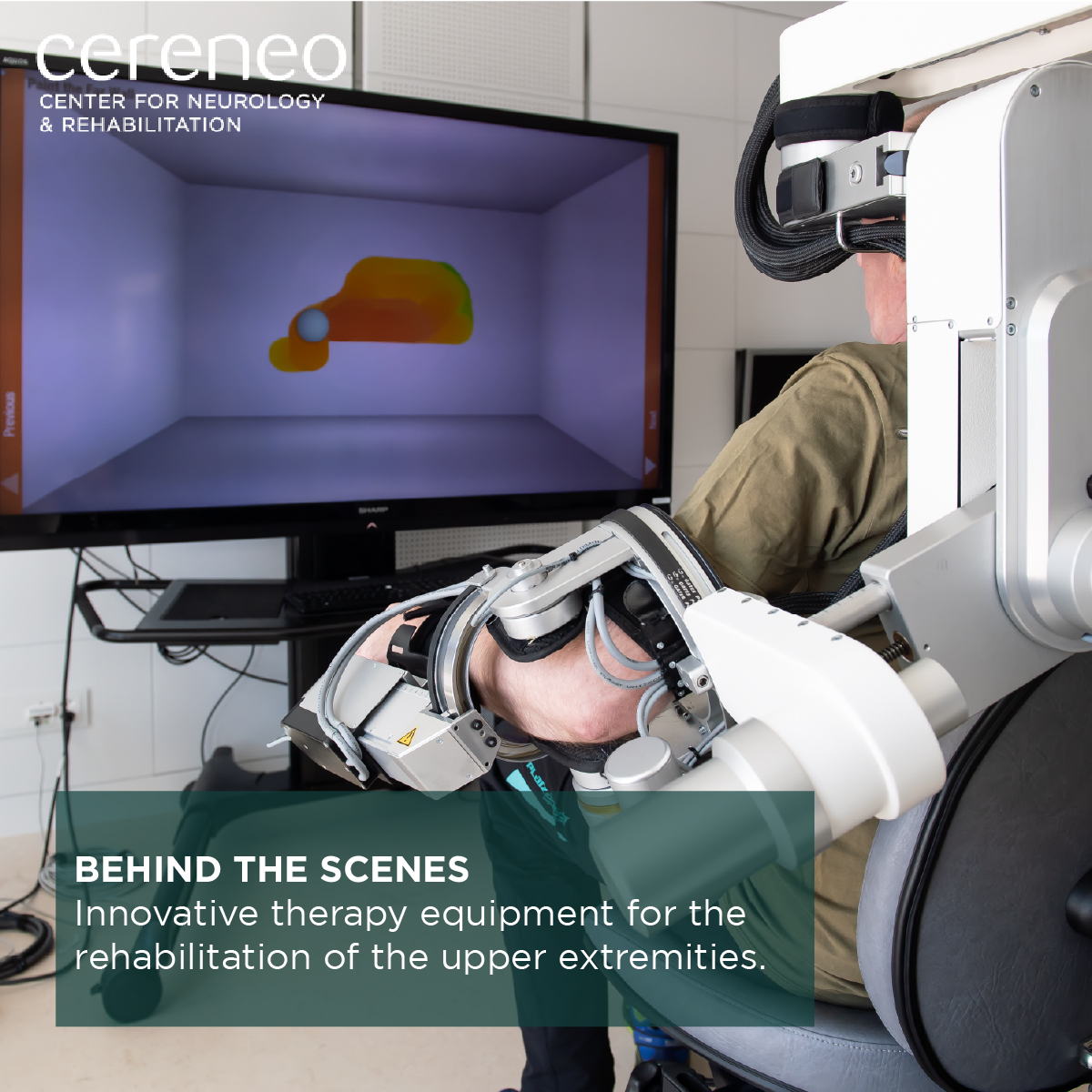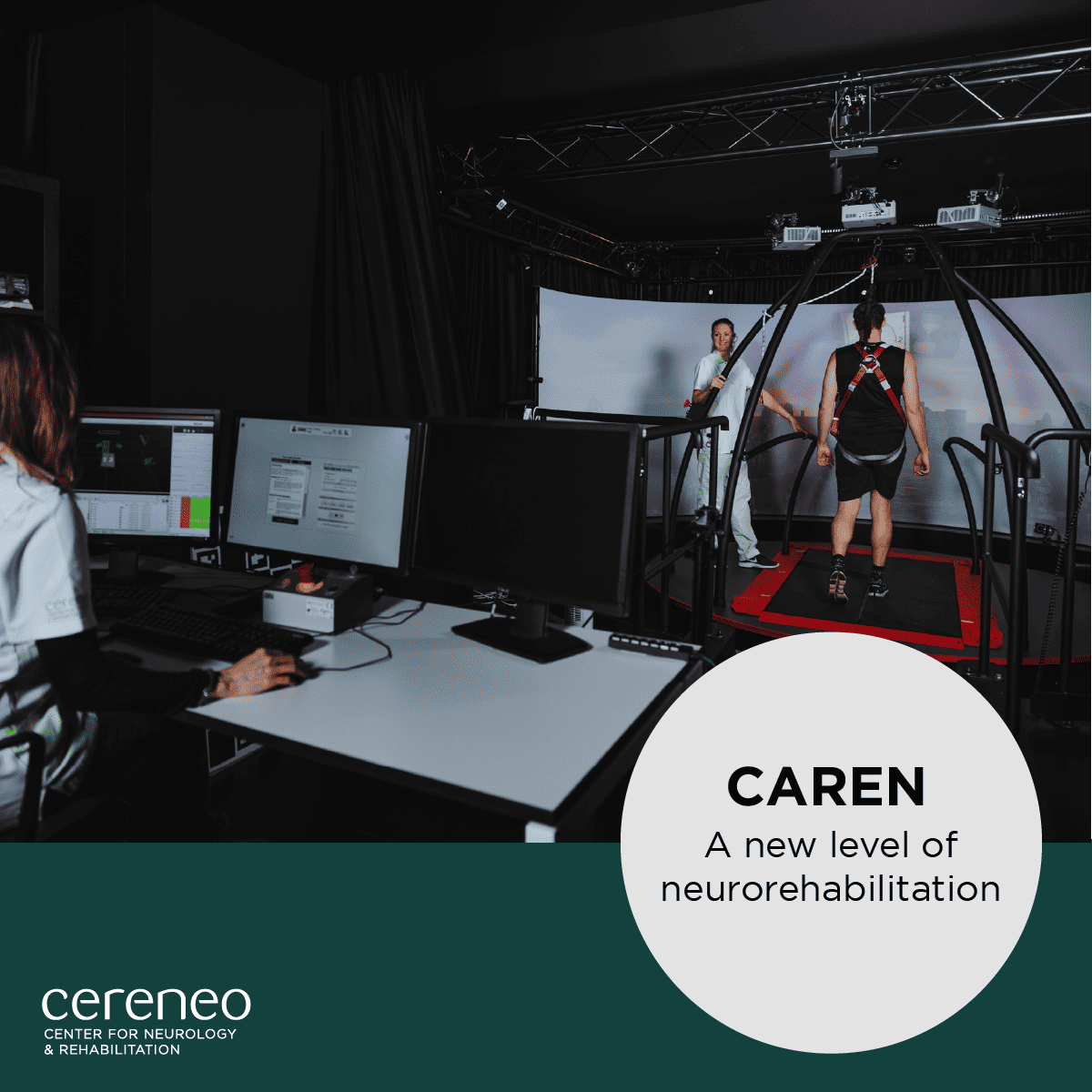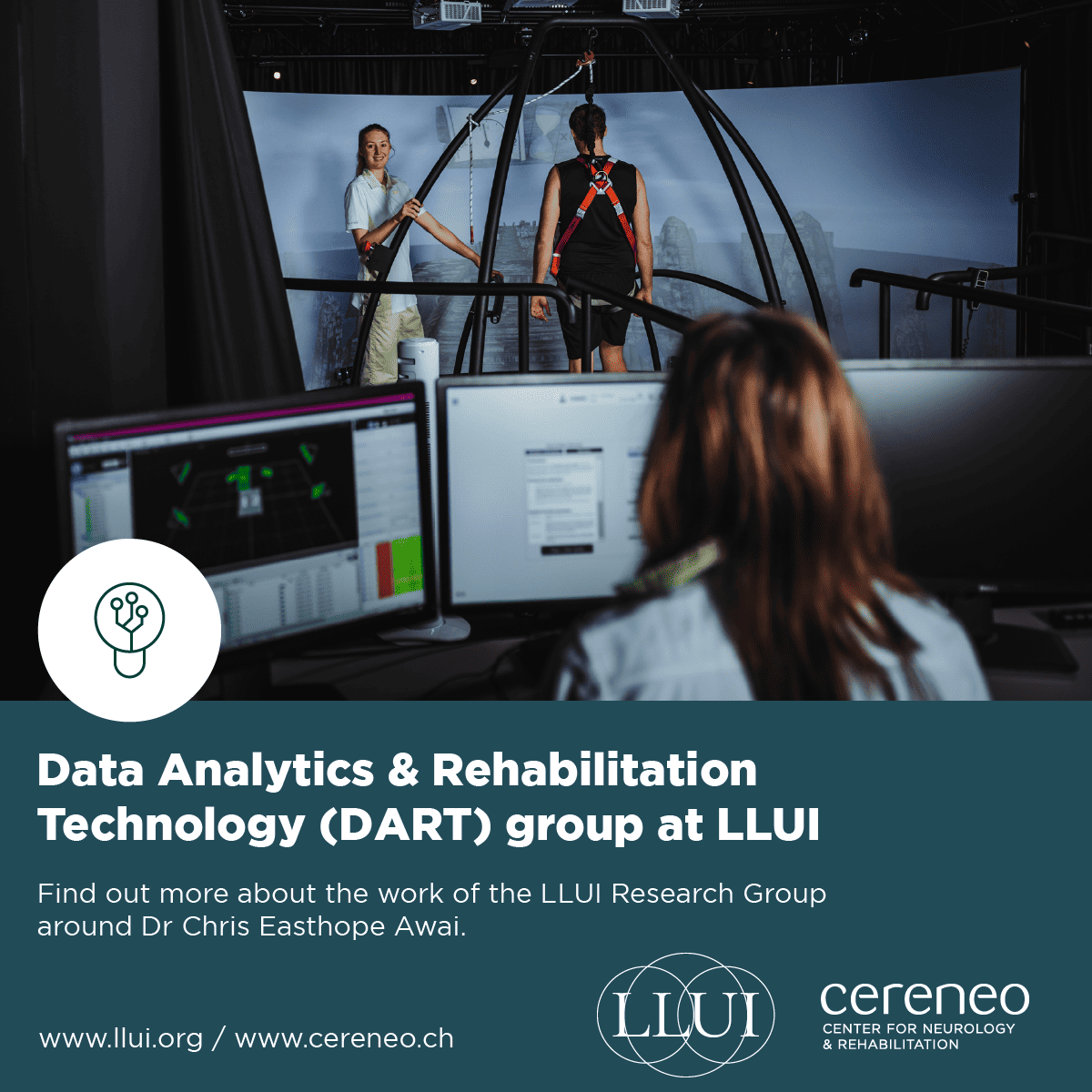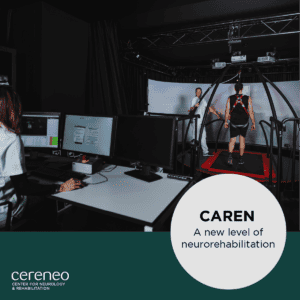After a stroke, traumatic brain injury, or neurodegenerative diseases such as Parkinson’s or multiple sclerosis, impairments in arm and hand function may occur. For each affected patient the nature of the impairment varies. It is rare for anyone to have the same degree of limitation. As a result, it is crucial to customize therapies to meet each patient’s specific needs. In physiotherapy and occupational therapy, we use robot-assisted devices at cereneo to control and customize the therapy.
The robots are adjusted to the patient’s current stage of rehabilitation. A great example for the flexible use of robotics are the Armeo devices from Hocoma for the training of arm and hand functions.
What is an Armeo device and when is it used?
In our clinic, we use the ArmeoPower, ArmeoSpring and ArmeoSenso.
ArmeoPower is used in the early stage of rehabilitation. With its ability to perform intensive exercises with a high number of repetitions, it promotes the restoration of motor skills. An exoskeleton is attached to the affected arm of the patient, leading from the shoulder to the hand. This can be customized to each patient individually. The device detects movement restrictions and offers individually tailored movement support. Motivating virtual reality exercises on a screen engage patients more actively in therapy. The wide range of exercises allows for targeted training of movement patterns.
In the next phase of rehabilitation, the ArmeoSpring is used. The transition to ArmeoSpring occurs in rehabilitation when patients have already regained certain motor skills and are capable of initiating movements on their own. ArmeoSpring enables independent movement therapy in which patients execute active movements to enhance the newly acquired motor skills. Arm weight support assists in this process and encourages more repetitions of reaching and grasping movements in line with therapy goals.
In the late phase of rehabilitation, when the patient has only mild to moderate impairments in the upper extremities, we switch to the ArmeoSenso.
Unlike ArmeoPower and ArmeoSpring, this device does not use an exoskeleton. Instead, the patient is equipped with a hand module and three motion sensors. With the hand module, the patient can perform various exercises on a screen, thereby training grip function.
The devices store the therapy results of each patient to better track progress and boost patient motivation. They enable individual, high-intensity therapy tailored to the specific needs of the patients, contributing to accelerating the recovery and restoration of arm and hand functions and improving long-term outcomes.
An interprofessional therapy concept combined with and supported by the right devices is the foundation for a successful rehabilitation. Innovation in the development of robotic devices and sensors is critical to further advance the rehabilitation field and improve patient outcomes.










